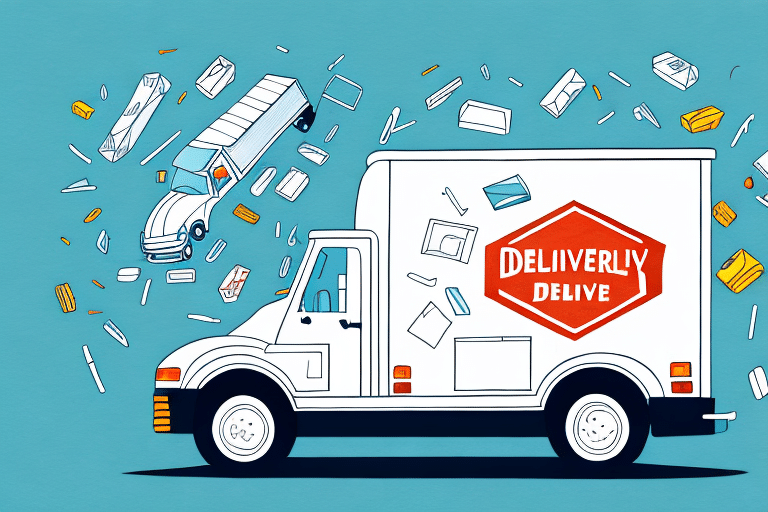Ecommerce Delivery Management: Reducing Costs and Enhancing Efficiency
In the competitive landscape of ecommerce, efficient and cost-effective delivery management is paramount to business success. Ecommerce delivery management encompasses the entire logistics process of transporting a product from your warehouse to your customer's doorstep. Navigating the complexities of shipping requires a well-optimized strategy to ensure timely deliveries, cost reductions, and high customer satisfaction. This article delves into the essentials of ecommerce delivery management, offering strategies to lower delivery costs and select the most suitable shipping carriers and services for your business.
Understanding and Reducing Ecommerce Delivery Costs
Breaking Down Delivery Expenses
To effectively reduce delivery costs, it's crucial to comprehend the various components that contribute to the overall expense. Key factors include:
- Shipping Carrier Fees: Charges imposed by carriers based on weight, dimensions, and destination.
- Packaging Materials: Costs associated with boxes, padding, and protective materials.
- Handling and Labor: Expenses related to packing and processing orders.
- Transportation Costs: Fees for transporting goods from warehouses to distribution centers and customers.
By dissecting these costs, businesses can identify areas for potential savings without compromising service quality.
Strategies for Cost Reduction
Implementing targeted strategies can significantly lower ecommerce delivery costs:
- Optimize Shipping Strategies: Select the most cost-effective shipping carrier for each order based on factors like package weight, destination, and required delivery time.
- Negotiate Bulk Rates: Leverage shipping volume to negotiate better rates with carriers. Consolidating shipments can lead to substantial discounts.
- Eco-Friendly Packaging: Utilize sustainable materials and minimize package size and weight to reduce both costs and environmental impact.
These approaches help in maintaining quality while ensuring cost-efficiency.
Choosing the Right Shipping Carrier and Services
Key Factors to Consider
Selecting the appropriate shipping carrier is critical for effective delivery management. Consider the following factors:
- Delivery Times: Assess whether the carrier can meet your delivery speed requirements.
- Pricing: Compare rates to ensure competitiveness while maintaining service quality.
- Shipment Tracking: Reliable tracking systems enhance transparency and customer trust.
- Geographic Coverage: Ensure the carrier can deliver to all regions your business serves.
- Customer Service: Responsive support is essential for resolving any shipping issues promptly.
Pros and Cons of Different Carriers
Various carriers offer distinct advantages and drawbacks:
- USPS: Ideal for small packages with competitive rates but may have longer delivery times for certain destinations.
- UPS: Known for reliability and extensive tracking but can be more expensive for smaller shipments.
- FedEx: Offers fast delivery options and robust international services, though costs can be higher compared to others.
- Regional Carriers: Provide localized expertise and potentially lower rates for specific areas but may lack nationwide coverage.
Choosing the right carrier involves balancing these factors to align with your business needs and customer expectations.
Effective Strategies for Cost-Effective Ecommerce Delivery
Negotiating with Shipping Carriers
Building strong relationships with shipping carriers can lead to favorable terms and discounts. Communicate your shipping volume, frequency, and specific needs clearly to negotiate better rates. Establishing a professional rapport ensures that carriers are more willing to accommodate your business requirements.
Offering Multiple Delivery Options
Providing customers with a variety of delivery choices enhances satisfaction and can lead to increased sales. Options may include:
- Standard Delivery: Cost-effective for customers not in a hurry.
- Express Delivery: Faster delivery for those willing to pay a premium.
- Same-Day Delivery: Immediate delivery in certain areas, boosting competitiveness.
This flexibility caters to diverse customer preferences, fostering loyalty and differentiating your business from competitors.
The Role of Technology in Streamlining Delivery Management
Modern technology plays a pivotal role in optimizing ecommerce delivery management. Utilizing advanced shipping software can automate tasks such as rate comparisons, label printing, and pickup scheduling, reducing manual errors and saving time. Additionally, integrating real-time tracking systems enhances visibility for both businesses and customers, allowing proactive management of delivery issues. Data analytics tools can identify inefficiencies and bottlenecks in the logistics process, enabling continuous improvement and cost savings.
Best Practices to Improve Customer Satisfaction
Handling Returns and Refunds
A seamless returns process is essential for maintaining customer trust and satisfaction. Implement clear return policies, ensure easy-to-use tracking and returns procedures, and provide prompt refunds. A hassle-free returns experience not only retains customers but also encourages repeat business.
Measuring Success with Key Metrics
Tracking and analyzing key performance indicators (KPIs) is vital for assessing the effectiveness of your delivery management strategy. Important metrics include:
- On-Time Delivery Rate: Percentage of orders delivered by the promised date.
- Delivery Cost per Order: Average cost incurred for delivering each order.
- Customer Satisfaction Scores: Feedback and ratings from customers regarding their delivery experience.
- Carrier Performance: Evaluation of each carrier's reliability and efficiency.
Continuous monitoring of these metrics facilitates informed decision-making and ongoing optimization of delivery processes.
Conclusion
Effective ecommerce delivery management is a cornerstone of a successful online business. By understanding the intricacies of delivery costs, selecting the right shipping carriers, and implementing strategic cost-reduction measures, businesses can enhance efficiency and profitability. Leveraging technology and adhering to best practices further ensures high customer satisfaction and sustained growth. Continually assessing performance metrics allows for ongoing improvements, ensuring that your delivery management strategy evolves with your business needs and customer expectations.






















